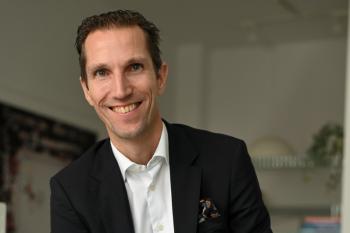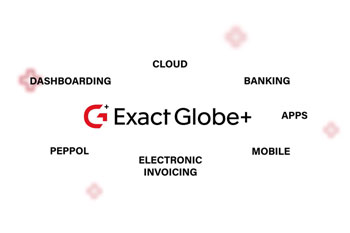News
4 misconceptions that keep entrepreneurs from digitalisation

Automation is the driving force that's helping many companies through the crisis, allowing companies to focus on their customers and their core business. Nevertheless, some are still hesitant when it comes to digitalisation, and change inevitably conjures up feelings of resistance. Jarno van Hurne, Product Line Director at Exact, dispels a number of common objections and offers some advice.
"My business is too small"
Many entrepreneurs think that digitalisation and smart automation are only reserved for large companies, but this misconception is easy to dispel. The role played by digitalisation has been accelerated by various factors, including the coronavirus pandemic. The SME Barometer shows that 17% of SMEs have paid closer attention to improving their (online) customer experience. Van Hurne: "Software is becoming increasingly user-friendly and intuitive. User-friendliness is a key starting point in the development. You don't need a degree to be able to use the software."
In addition, the use of software is now also profitable for small businesses. You no longer have to buy software, but can purchase it as a service. Instead of a significant, one-off investment, you only pay a low, fixed monthly fee for the applications you need. Monthly payments also place less of a burden on your budget and make it easier for you to get started.
"My intuition is my wisest adviser"
Many business owners run their business intuitively, even though data could prove to be a valuable partner. Some business owners have already realised this: according to the SME Barometer, 24% of business owners can generate a real-time overview of their business at the touch of a button. Only 20% indicated that data plays a limited role in their decision-making.
By using the data available from your organisation and your industry, you can make better, well-informed decisions. This not only helps you to better serve your customers, but also teaches you to recognise patterns and optimise your company's capacity. Van Hurne illustrates this point with an example: "An old-fashioned ice-cream vendor looks at their books and sees that they sold a hundred ice-creams last year, and therefore wants to sell a hundred this year. The modern ice-cream vendor looks further ahead, and sees that July was exceptionally hot last year and that the weather forecast for the coming July isn't great. What's more, the entire industry is suffering from a dip. They decide to buy less to avoid being left with too much ice-cream."
"My company's problems are unique"
"This misconception is somewhat trickier to dispel", says Van Hurne. "That's because it requires entrepreneurs to put some of their pride to one side and admit that they're not as unique as they think. Product-oriented companies, in particular, often feel very special. They think standard solutions aren't interesting for them because no-one works in the same way as they do."
However, in reality we see that this isn't really the case. Many ideas and applications have already been implemented in the manufacturing industry, meaning a range of standard solutions and best practices are available on the market for use by companies in different sectors. 90% of the software's blueprint often already exists, while the customised final 10% can be set up in consultation with the provider. The idea that 'standard' solutions aren't suitable is therefore outdated. Nowadays, it's just a matter of getting started, albeit on a small scale. An expert can guide you through a library of best practices, after which you can usually get started quickly.
"Getting started with automation is difficult"
Entrepreneurs who want to go digital sometimes shy away from the challenge. Software solutions have the potential to be all-encompassing, to the extent that getting started can be overwhelming. Van Hurne: "We often hear that people dreaded the start. But if you start off with small steps, you'll find that it doesn't have to be a huge challenge or complicated. By simply looking at where most work is performed manually (unneccesarily) in your company, you, as a company, can quickly come up with a plan to rediscover your core focus."
ERP systems make clear which work can be performed by a computer and which by people, and how man and machine can work together. This was already the case, and has only increased since the start of the coronavirus pandemic. This is set to increase even further due to the growth of artificial intelligence, machine learning and cloud computing. We are heading towards a relationship between man and machine in which machines collect, process and use data. According to Van Hurne, this offers people a number of choices. "People will remain the creative force behind ideas, and therefore companies, in the future. They will work with software solutions, rather than 'for'. But it does require them to start using that software. There's no reason to wait any longer."


